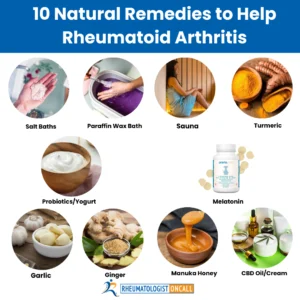SHARE
Hand pain is a prevalent issue that can significantly impact our daily lives. From simple tasks like gripping a doorknob to more complex activities, our hands are constantly in use. Several factors can lead to hand pain, including osteoarthritis (OA), overuse injuries, carpal tunnel syndrome, rheumatoid arthritis (RA), psoriatic arthritis (PsA), and gout. In this comprehensive guide, we’ll explore the most common causes of hand pain, their symptoms, and effective strategies for finding relief.
Osteoarthritis (OA) – The Wear and Tear Arthritis
Osteoarthritis is one of the most prevalent causes of hand pain, especially among older adults. It occurs when the protective cartilage that cushions the ends of bones wears down over time. In the hands, OA can affect the joints at the base of the thumb (known as basal joint arthritis) or the joints of the fingers.
Symptoms of Hand OA:
- Pain, stiffness, and tenderness in the affected joints.
- Decreased range of motion.
- Development of bony nodules or Heberden’s nodes at the finger joints.
Management and Relief:
- Anti-inflammatory medications.
- Physical therapy to improve hand strength and flexibility.
- Use of assistive devices for daily tasks.
- In severe cases, surgical options like joint fusion or joint replacement may be considered.
Overuse Injuries – Straining the Hand’s Limits
Overuse injuries can result from repetitive hand movements or excessive force applied to the hand over time. These injuries are common in various professions and activities, such as typing, painting, or playing musical instruments.
Symptoms of Overuse Injuries:
- Pain, often described as a dull ache or throbbing.
- Tenderness and swelling.
- Reduced grip strength and hand function.
Management and Relief:
- Rest and avoiding activities that exacerbate the pain.
- Ice and heat therapy.
- Anti-inflammatory medications.
- Physical therapy to strengthen the affected muscles and tendons.
Carpal Tunnel Syndrome – Nerve Compression
Carpal Tunnel Syndrome (CTS) occurs when the median nerve, which runs through the carpal tunnel in the wrist, becomes compressed or pinched. This condition is often linked to repetitive hand motions.
Symptoms of CTS:
- Numbness, tingling, and pain in the thumb, index, and middle fingers.
- Hand weakness.
- Wrist pain that often worsens at night.
Management and Relief:
- Wrist splints to keep the wrist in a neutral position.
Physical therapy.
Corticosteroid injections.
In severe cases, surgical release of the carpal tunnel may be necessary.
Rheumatoid Arthritis (RA) – Autoimmune Attack
Rheumatoid Arthritis is an autoimmune disease that affects not only joints but also other organs, including the skin, heart, and lungs. When it comes to hand pain, RA can cause chronic inflammation in the synovium, the lining of the membranes that surround the joints.
Symptoms of Hand RA:
- Joint pain, swelling, and stiffness, often affecting multiple joints in a symmetrical pattern.
- Fatigue and general malaise.
- Deformities in the hands, such as swan-neck or boutonniere deformities.
Management and Relief:
- Disease-modifying antirheumatic drugs (DMARDs).
- Nonsteroidal anti-inflammatory drugs (NSAIDs).
- Physical and occupational therapy.
- Lifestyle changes to manage symptoms.
Psoriatic Arthritis (PsA) – Skin and Joint Connection
Psoriatic Arthritis is another autoimmune condition, often seen in individuals with psoriasis. It can affect various joints, including those in the hands.
Symptoms of Hand PsA:
- Joint pain, stiffness, and swelling.
- Psoriasis skin lesions.
- Nail changes, such as pitting or separation from the nail bed.
Management and Relief:
- Nonsteroidal anti-inflammatory drugs (NSAIDs).
- Disease-modifying antirheumatic drugs (DMARDs).
- Biologic medications.
- Lifestyle modifications to ease symptoms.
Gout – Excessive Uric Acid
Gout is a type of arthritis caused by the buildup of uric acid crystals in the joints, often resulting in sudden, severe attacks of pain and swelling. While gout most commonly affects the big toe, it can also affect the joints in the hand.
Symptoms of Gout in the Hand:
- Intense pain, often described as throbbing or burning.
- Swelling and redness.
- Limited joint mobility.
Management and Relief:
- Medications to lower uric acid levels.
- Anti-inflammatory drugs (NSAIDs or corticosteroids) to manage pain and inflammation.
- Lifestyle changes, including dietary adjustments.

.
What can patients do to ameliorate pain?
- If you are using your hands to type a lot, consider using a wrist support brace at nighttime. There are many options in the medical supply stores or online. Here is one that you may consider: #ad night wrist support brace #ad
- If you have pain in the thumb and using your phone a lot, place the phone in the other hand and scroll with a different finger. Alternatively, place the phone on a support and use your fingers to scroll up or down. You may alleviate the pain using a thumb stabilizer that will keep your thumb in a neutral position. Here is one that you may consider: #ad thumb stabilizer
- Perform stretching exercises with your hands in the mornings
- Use anti-inflammatory medications very carefully and discuss this with your physician.
For more advice, read our following blogs, where I will discuss hand exercises and other non-invasive options to treat hand pain. If your pain does not resolve, consider asking an arthritis specialist.
About the Author

Dr.Diana Girnita
Diana Girnita, MD, PhD is an US board certified internal medicine and rheumatology. She completed a PhD in immunology, postdoctoral fellowship at Harvard University, immunology fellowship at University of Pittsburgh and rheumatology fellowship at University of Cincinnati. She is the founder & CEO of Rheumatologist OnCall, a telemedicine company that serves multiple states in the US. Dr. Girnita is a graduate of the Nutrition Science course from Stanford University. Dr. Girnita was recognized many times with “Top Doctor” award (2017-2020) and is frequently invited speaker of the US National Arthritis Foundation. Read more














